
Jacqueline Cochran was an American pilot and business executive. She pioneered women's aviation as one of the most prominent racing pilots of her generation. She set numerous records and was the first woman to break the sound barrier on 18 May 1953. Cochran was the wartime head of the Women Airforce Service Pilots (WASP) (1943–1944), which employed about 1000 civilian American women in a non-combat role to ferry planes from factories to port cities. Cochran was later a sponsor of the Mercury 13 women astronaut program.

The Women Airforce Service Pilots (WASP) was a civilian women pilots' organization, whose members were United States federal civil service employees. Members of WASP became trained pilots who tested aircraft, ferried aircraft and trained other pilots. Their purpose was to free male pilots for combat roles during World War II. Despite various members of the armed forces being involved in the creation of the program, the WASP and its members had no military standing.

The Civilian Pilot Training Program (CPTP) was a flight training program (1938–1944) sponsored by the United States government with the stated purpose of increasing the number of civilian pilots, though having a clear impact on military preparedness.

Cornelia Clark Fort was an American aviator who became famous for being part of two aviation-related events. The first occurred while conducting a civilian training flight at Pearl Harbor on December 7, 1941, when she was the first United States pilot to encounter the Japanese air fleet during the Attack on Pearl Harbor. She and her student narrowly escaped a mid-air collision with the Japanese aircraft and a strafing attack after making an emergency landing.

Betty Gillies was an American aviator, and the first pilot to qualify for the Women's Auxiliary Ferrying Squadron, later amalgamated into the Women Airforce Service Pilots.
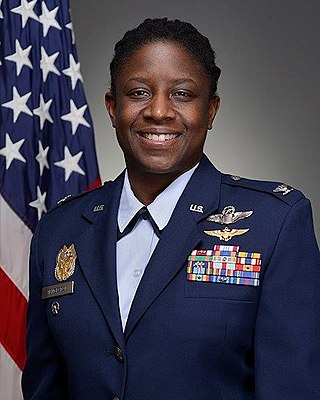
Merryl Tengesdal is an American retired career military officer who is the first and only Black woman to fly the United States Air Force's U-2 spy plane used for specialized high-altitude reconnaissance missions. She is one of five women and only the fourth Black person to be in the U-2 program. She shares the plane's nickname, The Dragon Lady.

Phoebe Jane Fairgrave Omlie was an American aviation pioneer, particularly noted for her accomplishments as an early female aviator. Omlie was the first woman to receive an airplane mechanic's license, the first licensed female transport pilot, and the first woman to be appointed to a federal position in the aviation field.

Amanda Renae Simpson is an American pilot, businessperson and politician.
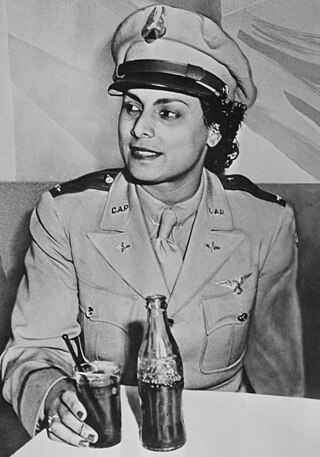
Willa Beatrice Brown was an American aviator, lobbyist, teacher, and civil rights activist. She was the first African American woman to earn a pilot's license in the United States, the first African American woman to run for the United States Congress, first African American officer in the Civil Air Patrol, and first woman in the U.S. to have both a pilot's license and an aircraft mechanic's license.
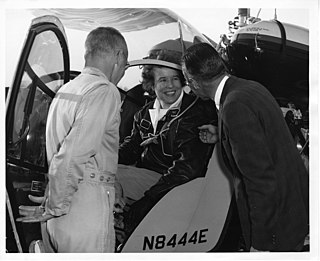
Dora Jean Dougherty Strother was an American aviator best known as a Woman Airforce Service Pilots (WASP) and B-29 Superfortress demonstration pilot. She was a U.S. military pilot, human factors engineer with Bell Aircraft, instructor at the University of Illinois and helicopter test pilot for Bell Aircraft.

Elaine D. Harmon was an American from Maryland who served in the U.S. Women Airforce Service Pilots (WASP) during World War II. In 2009 she received a Congressional Gold Medal for her service as a pilot during World War II. As a WASP pilot, she has been accorded full military honors at Arlington National Cemetery. In 2016, Ms. Harmon was posthumously inducted into the Maryland Women's Hall of Fame.
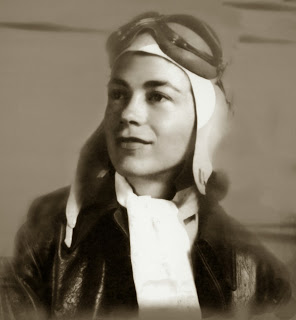
Dorothy Swain Lewis was an American aviator who trained Navy pilots and flew with the Women Airforce Service Pilots (WASP) program during World War II. She was also an artist who created a series of cast-bronze sculptures of WASP pilots for various World War II memorial sites.

Bernice "Bee" S. Falk Haydu was an American aviator and served as a Women Airforce Service Pilot (WASP) in World War II. Haydu remained active in aviation and remained an advocate for women pilots.

Hazel Jane Raines was an American pioneer aviator and flight instructor with the Civilian Pilot Training Program. During World War II, she was part of the first group of United States women to fly military aircraft, which they did in a war zone for the civilian British Air Transport Auxiliary. She was later a member of the civilian contract labor Women Airforce Service Pilots. After the war, she taught instrument training in Brazil. When President Harry S. Truman authorized the integration of women into the military, she served with the Women's Air Force and was based in Texas, Alabama, and finally London until her death. Raines was the first woman in Georgia to earn a pilot's license, and has been inducted into both the Georgia Aviation Hall of Fame and the Georgia Women of Achievement.

Evelyn Esther Nicholas Burleson Whitmaker Waldren was the first woman in Nebraska to become a pilot, the first woman in North Dakota with a transport pilot's license, and one of the first women in the United States with a flight instructor's license. In 1941, she set a new speed and distance record for female pilots in light planes.

Teresa D. "Jamesy" James was an American aviator. James was one of the first Women Airforce Service Pilots (WASP) pilots, starting out as part of the Women's Auxiliary Ferrying Squadron (WAFS) in 1942. James was also known as a stunt pilot and later became a Major in the Air Force Reserves. James flew most of her life and fought for military recognition for the WASP.
Emma Carter Browning was an American pilot and aviation executive from Texas.

Dorothy Eleanor Olsen was an American aircraft pilot and member of the Women Airforce Service Pilots (WASPs) during World War II. She grew up on her family's farm in Woodburn, Oregon, developing an interest in aviation from a young age. She earned her private pilot certificate in 1939, when it was unusual for women to be pilots.
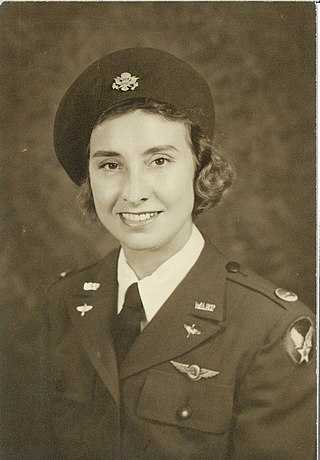
Adela "Del" Riek Scharr was an American aviator. Scharr was the first woman in St. Louis to earn her commercial flight license and worked as a flight instructor at Lambert Field. Scharr was recruited in 1942 to join the Women's Axillary Ferrying Squadron (WAFS) and later flew planes as a WASP. Scharr was also the first woman to fly a P-39 Bell Aircobra. After World War II, Scharr was commissioned as a major in the Air Force and also worked as a teacher.

Marion Stegeman Hodgson (1921-2016) was one of the first women to train as a military pilot in the United States. Her 1996 autobiography Winning My Wings: A Woman Airforce Service Pilot in World War II was praised for its unique insight into the Women Airforce Service Pilots program in World War II. Her post-war work writing for magazines and newspapers helped bring to attention the fact that Women Airforce Service Pilots were never considered veterans of the war. Hodgson has been inducted into aviation halls of fame in Texas and Georgia.






















